



Bwindi Impenetrable National Park is home to about 460 mountain gorillas. You can go on a trek to see many of these gorilla families up close. The park is also home to special animals that live only in this region. These include L’Hoest’s monkeys, the Rwenzori three-horned chameleon, and 23 kinds of birds that are found nowhere else. While you are at Bwindi, you might also see chimpanzees, but they are wild and stay away from people. There are also about 100 forest elephants, but they are very shy and hard to spot. You are more likely to see other forest animals, like bushbucks and several types of duikers.
Welcome to Bwindi Impenetrable National Park! This is a very special place, what we call a conservation hotspot. This means it is one of the most important places in the world for protecting animals, especially endangered ones. Here, you will find the amazing mountain gorilla, as well as chimpanzees and forest elephants. While there are 120 types of mammals in the park, you will most often see black-and-white colobus and L’Hoest’s monkeys. Bwindi is also a fantastic place for seeing birds and butterflies. We have 350 kinds of birds and 220 kinds of butterflies, and some of them are very rare and can only be found in this region!
When you plan your gorilla trekking trip, the most important thing to consider is the rain. Heavy rain can make the walking trails very muddy and slippery, making your hike more difficult. While it can rain at any time of the year, the best time to visit is from June to August and from December to February, as there is less rain during these months. The park stays open all year, so you can choose to visit whenever you like.


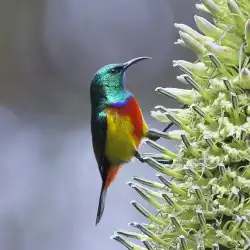
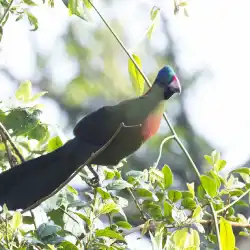
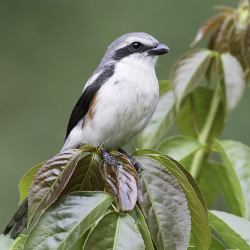
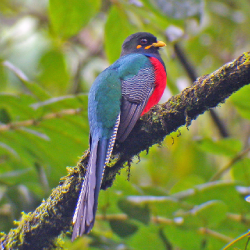
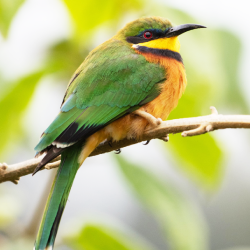
Bird watching in Bwindi is good all year, but the best months are March and September. The main nesting season is from May to June, and there’s plenty of food for the birds from late May through September. If you want to see the special Grauer’s broadbill, the best time to look is from May to July. Keep in mind that heavy rain can make bird watching difficult; the wettest months are March to May and September to November. The driest months, June and July, are also a good time to visit to avoid the rain.
450+
Nov to Apr



There are two dry seasons in Bwindi. The main one is from June to August. In June and July, it is the driest time, but you might still get some rain. By August, the rain starts to increase, but the forest trails are still in good condition.
The second dry season is a shorter one, from December to February. The rain slows down in December but starts to pick up again in February. You can still expect some rain to fall. The temperatures are similar in both seasons: it is usually warm during the day, around 21-22°C (70-72°F), but it gets cool at night, dropping to about 12°C (54°F).
The two wet seasons in Bwindi are from March to May and from September to November. During these times, it rains a lot, and sometimes it can even drizzle for days. The forest trails become very muddy and slippery, making them difficult to hike. The roads also get muddy, so you may need a 4×4 vehicle to get around safely. Temperatures are similar to the rest of the year, with daytime temperatures of about 22°C (72°F).


Bwindi has four different areas where you can start your gorilla trek: Buhoma, Ruhija, Rushaga, and Nkuringo. It’s important to know that these areas are several hours apart by car.
Most visitors arrive in Uganda through Entebbe International Airport (EBB). From here, the drive to Bwindi is very long, taking at least 10 hours. If you are coming from other parks in Uganda, the drive is shorter:
From the Ishasha sector of Queen Elizabeth National Park, it takes about 2 to 3* hours to get to Buhoma.
From other parts of Queen Elizabeth National Park, the drive is about 4 to 6* hours.
From Lake Mburo National Park, the drive is 5 to 7* hours.
During the rainy seasons (March to May and September to November), you will need a 4×4 vehicle to safely travel on some of the roads.
If you want to avoid the long drive, you can take a domestic flight from Entebbe or Kampala to the nearby towns of Kihihi or Kisoro. Another popular option is to fly into the capital of Rwanda, Kigali, as it is much closer to Bwindi than Entebbe is, and the drive from there is a lot shorter.
It is always best to check online travel sites like Google Flights, Expedia, or Skyscanner for information on airlines and flight costs to Entebbe International Airport (EBB).
Most of your domestic flights between parks are arranged by your tour consultant and are already included in your package. You can reach Bwindi by a scheduled or private chartered flight. There are two main airports near the park: Kihihi Airport is the closest to the Buhoma and Ruhija trekking areas, while Kisoro Airport is the closest to the Rushaga and Nkuringo areas. Both airports are about 40km (25 miles) away, and the drive from either one takes at least 1.5 hours.
Only one domestic carrier currently offers scheduled flights to Kihihi and Kisoro:
For details on passports, visas, and other entry rules for Uganda, please check our “How To Get to Uganda” page.

Bwindi Impenetrable National Park is a very safe place to visit. Crime is very rare in all of Uganda’s parks, and your guide will always be with you to ensure your safety.
For the most up-to-date information, you can also check your government’s official travel advice for Uganda.
Before your trip, it’s a good idea to talk to your doctor or a travel clinic for advice on vaccinations and how to protect yourself from malaria. To avoid getting malaria, you should use a strong mosquito repellent, wear long sleeves and pants in the evening, and take antimalarial medicine as advised by your doctor.
Gorilla trekking is very safe. Gorillas are generally not aggressive, and problems almost never happen. As long as you follow the directions from your guide, you should have nothing to worry about. You will also receive a safety talk before your trek begins.




Bwindi Impenetrable National Park is home to about 460 mountain gorillas. You can go on a trek to see many of these gorilla families up close. The park is also home to special animals that live only in this region. These include L’Hoest’s monkeys, the Rwenzori three-horned chameleon, and 23 kinds of birds that are found nowhere else. While you are at Bwindi, you might also see chimpanzees, but they are wild and stay away from people. There are also about 100 forest elephants, but they are very shy and hard to spot. You are more likely to see other forest animals, like bushbucks and several types of duikers.
Welcome to Bwindi Impenetrable National Park! This is a very special place, what we call a conservation hotspot. This means it is one of the most important places in the world for protecting animals, especially endangered ones. Here, you will find the amazing mountain gorilla, as well as chimpanzees and forest elephants. While there are 120 types of mammals in the park, you will most often see black-and-white colobus and L’Hoest’s monkeys. Bwindi is also a fantastic place for seeing birds and butterflies. We have 350 kinds of birds and 220 kinds of butterflies, and some of them are very rare and can only be found in this region!
When you plan your gorilla trekking trip, the most important thing to consider is the rain. Heavy rain can make the walking trails very muddy and slippery, making your hike more difficult. While it can rain at any time of the year, the best time to visit is from June to August and from December to February, as there is less rain during these months. The park stays open all year, so you can choose to visit whenever you like.







Bird watching in Bwindi is good all year, but the best months are March and September. The main nesting season is from May to June, and there’s plenty of food for the birds from late May through September. If you want to see the special Grauer’s broadbill, the best time to look is from May to July. Keep in mind that heavy rain can make bird watching difficult; the wettest months are March to May and September to November. The driest months, June and July, are also a good time to visit to avoid the rain.
450+
Nov to Apr



There are two dry seasons in Bwindi. The main one is from June to August. In June and July, it is the driest time, but you might still get some rain. By August, the rain starts to increase, but the forest trails are still in good condition.
The second dry season is a shorter one, from December to February. The rain slows down in December but starts to pick up again in February. You can still expect some rain to fall. The temperatures are similar in both seasons: it is usually warm during the day, around 21-22°C (70-72°F), but it gets cool at night, dropping to about 12°C (54°F).
The two wet seasons in Bwindi are from March to May and from September to November. During these times, it rains a lot, and sometimes it can even drizzle for days. The forest trails become very muddy and slippery, making them difficult to hike. The roads also get muddy, so you may need a 4×4 vehicle to get around safely. Temperatures are similar to the rest of the year, with daytime temperatures of about 22°C (72°F).


Bwindi has four different areas where you can start your gorilla trek: Buhoma, Ruhija, Rushaga, and Nkuringo. It’s important to know that these areas are several hours apart by car.
Most visitors arrive in Uganda through Entebbe International Airport (EBB). From here, the drive to Bwindi is very long, taking at least 10 hours. If you are coming from other parks in Uganda, the drive is shorter:
From the Ishasha sector of Queen Elizabeth National Park, it takes about 2 to 3* hours to get to Buhoma.
From other parts of Queen Elizabeth National Park, the drive is about 4 to 6* hours.
From Lake Mburo National Park, the drive is 5 to 7* hours.
During the rainy seasons (March to May and September to November), you will need a 4×4 vehicle to safely travel on some of the roads.
If you want to avoid the long drive, you can take a domestic flight from Entebbe or Kampala to the nearby towns of Kihihi or Kisoro. Another popular option is to fly into the capital of Rwanda, Kigali, as it is much closer to Bwindi than Entebbe is, and the drive from there is a lot shorter.
It is always best to check online travel sites like Google Flights, Expedia, or Skyscanner for information on airlines and flight costs to Entebbe International Airport (EBB).
Most of your domestic flights between parks are arranged by your tour consultant and are already included in your package. You can reach Bwindi by a scheduled or private chartered flight. There are two main airports near the park: Kihihi Airport is the closest to the Buhoma and Ruhija trekking areas, while Kisoro Airport is the closest to the Rushaga and Nkuringo areas. Both airports are about 40km (25 miles) away, and the drive from either one takes at least 1.5 hours.
Only one domestic carrier currently offers scheduled flights to Kihihi and Kisoro:
For details on passports, visas, and other entry rules for Uganda, please check our “How To Get to Uganda” page.

Bwindi Impenetrable National Park is a very safe place to visit. Crime is very rare in all of Uganda’s parks, and your guide will always be with you to ensure your safety.
For the most up-to-date information, you can also check your government’s official travel advice for Uganda.
Before your trip, it’s a good idea to talk to your doctor or a travel clinic for advice on vaccinations and how to protect yourself from malaria. To avoid getting malaria, you should use a strong mosquito repellent, wear long sleeves and pants in the evening, and take antimalarial medicine as advised by your doctor.
Gorilla trekking is very safe. Gorillas are generally not aggressive, and problems almost never happen. As long as you follow the directions from your guide, you should have nothing to worry about. You will also receive a safety talk before your trek begins.
Embarking on an African safari promises an adventure of a lifetime, showcasing the continent’s rich wildlife, breathtaking landscapes, and diverse cultures. While safaris are widely considered safe, especially those organized through reputable tour operators, it’s prudent to take certain precautions to ensure a smooth and secure experience. Here are some essential safety tips to consider:
Traveling through Africa offers an enriching experience filled with breathtaking landscapes, diverse cultures, and unparalleled wildlife encounters. While it’s generally safe, especially on organized tours or safaris, navigating urban environments requires a bit of savvy to ensure your trip remains worry-free. Here are some straightforward tips to keep in mind, whether you’re exploring bustling metropolises or serene landscapes:
Exploring the wild through a safari adventure is an exhilarating experience that brings you closer to nature’s most fascinating wildlife. Whether you opt for a guided tour with an experienced professional or decide to navigate the trails on a self-drive journey, safety is paramount to ensure an enjoyable and incident-free adventure. Here are some essential safety guidelines and tips to help you navigate your safari safely:


Chat with us on WhatsApp
Ready to book your trip? Just tell us your dates, interests, and budget, and we’ll send a custom, no-obligation itinerary straight to your inbox.